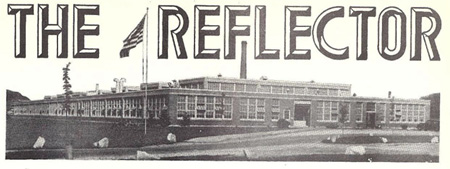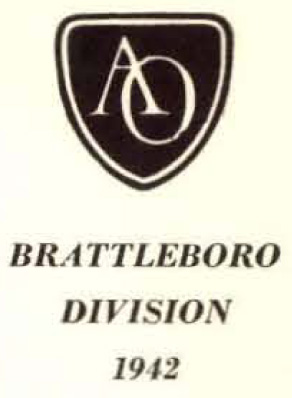Todd-AO Process Shown At MGM Studio |
Read more at in70mm.com The 70mm Newsletter |
| Published by: American Optical magazine "The Reflector", Brattleboro, VT. Friday, August 20, 1954. Article supplied by Dick Whitney (AO Heritage Museum), and re-typed by Anders M. Olsson (Sweden). | Date: 10.07.2012 |
 The first showing to the press of the
Todd-AO process took place on June 22,
on Sound Stage 2, at the Metro-Goldwyn studio in Los Angeles. This, followed
by a second showing in the evening to people prominent in the Hollywood
motion picture industry, resulted in "rave" notices in Hollywood and Los
Angeles papers, as well as feature stories in the New York Times and Variety
-- the "Bible" of the show world. These all gave full credit to Dr. Brian
O'Brien, Vice President for Research, and the staff of scientists in
Southbridge and Buffalo who have contributed to the
development of Todd-AO. The first showing to the press of the
Todd-AO process took place on June 22,
on Sound Stage 2, at the Metro-Goldwyn studio in Los Angeles. This, followed
by a second showing in the evening to people prominent in the Hollywood
motion picture industry, resulted in "rave" notices in Hollywood and Los
Angeles papers, as well as feature stories in the New York Times and Variety
-- the "Bible" of the show world. These all gave full credit to Dr. Brian
O'Brien, Vice President for Research, and the staff of scientists in
Southbridge and Buffalo who have contributed to the
development of Todd-AO.The sound stage had been converted into a simple theater arrangement to provide a work room for the viewing of rush or daily work prints in the filming of "Oklahoma!" "Looping or dubbing in," the process in which sound is added to certain scenes which are more easily filmed silent, was used during the greater part of this first showing. Although Sound Stage 2 is just a work room, and nothing but work prints of test scenes were available, the press reaction was enthusiastic to the point that Whitney Williams, reporting in "Hollywood Daily Variety," headlined his two-column story "Big Screen's New Click" and "The Hollywood Reporter" reported with: "Move Over, All Scopes! Todd-AO Bigger and Wider" and led off with the statement: |
More in 70mm reading: in70mm.com's Todd-AO Page "Oklahoma!" - The First Movie Produced By Todd-AO Todd-AO How It All Began Internet link: Dick Whitney's Todd-AO Page |
 "Wraps were finally taken off the new Todd-AO widescreen process at a press
demonstration at MGM yesterday, with the consensus being that only
Cinerama,
among the current techniques, can compare to its value in the audience
participation sense. But it surpasses Cinerama in that it requires only one
camera to photograph the subject; uses only one machine to project it; and
gets around the "seamed" screen of Cinerama with a continuous, deep-curved
screen... "Wraps were finally taken off the new Todd-AO widescreen process at a press
demonstration at MGM yesterday, with the consensus being that only
Cinerama,
among the current techniques, can compare to its value in the audience
participation sense. But it surpasses Cinerama in that it requires only one
camera to photograph the subject; uses only one machine to project it; and
gets around the "seamed" screen of Cinerama with a continuous, deep-curved
screen..."...The demonstration proved amazing full-screen clarity, which was not diminished from positions up close at the sides of the screen, indicating there will be little, if any, loss of seats in theaters showing Todd-AO productions. "This has strictly big-time road-show possibilities for pictures having sufficient quality for long, long runs." The more conservative New York Times gave the preview complete coverage in its June 23 issue, and special feature treatment in its Sunday, June 25, theatrical section. When Dr. O'Brien was asked for his comment on this Hollywood preview of the new process which he developed, he told: "There seems to be no doubt that the Todd-AO system was received with enthusiasm by the people who attended this first showing to the press. "I think that this success is a great credit to the American Optical Company, and specifically, to the more than one hundred men and women at Southbridge and in the Instrument Division at Buffalo who have taken part in creating the Todd-AO system. I, for one, am very proud to be associated with such a group." |
|
| Go: back - top - back issues - news index Updated 28-07-24 |
